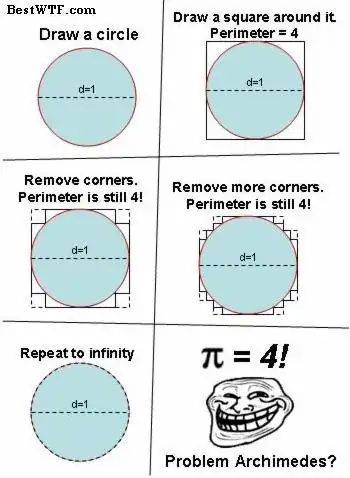This question is not meaningful unless you fix some specific parametrizations $\gamma_n$. Different parametrizations give you different limits, or no limit at all.
It is certainly possible to choose parametrizations such that the limit will be an injective parametrization of the circle, though. For instance, if you let each $\gamma_n$ be the counterclockwise parametrization by arc length starting from $(1/2,0)$ (assuming our circle is centered at the origin), the functions $\gamma_n:[0,4)\to\mathbb{R}^2$ will converge uniformly to a continuous injection $\gamma:[0,4)\to\mathbb{R}^2$ whose image is the circle. Explicitly, for instance, for $t\in [0,1]$, $\gamma(t)=(\frac{1}{2}\cos\theta,\frac{1}{2}\sin\theta)$ where $\theta\in[0,\pi/2]$ is the unique angle such that $\frac{1}{2}(1-\cos\theta)+\frac{1}{2}\sin\theta=t$. This is just because $\gamma_n(t)$ is some point in the first quadrant whose $L^1$ distance from $(1/2,0)$ is $t$, and these points are approaching the circle, so $\gamma(t)$ is some point on the circle whose $L^1$ distance from $(1/2,0)$ is $t$. The point $(\frac{1}{2}\cos\theta,\frac{1}{2}\sin\theta)$ for $\theta$ as described above is the unique such point on the circle which is in the first quadrant, and so it is the only possible value of $\gamma(t)$.
In other words, $\gamma$ is the parametrization of the circle "by arc length" except that the arc length is computed in the $L^1$ metric instead of in the usual Euclidean metric. By choosing different parametrizations $\gamma_n$, you could get $\gamma$ to be the usual parametrization of the circle by Euclidean arc length (just reparametrize the $\gamma_n$ by the same change of variable needed to turn this parametrization $\gamma$ into the usual one).
The moral here, as the good answers to the original question (which is not all of the top answers!) mention, is that the length of a (parametrized) curve is not continuous with respect to pointwise or even uniform limits of parametrizations. In particular, a limit of curves parametrized by arc length need not be parametrized by arc length. This has absolutely nothing to do with the parametrizations failing to be injective, as you seem to be proposing.
